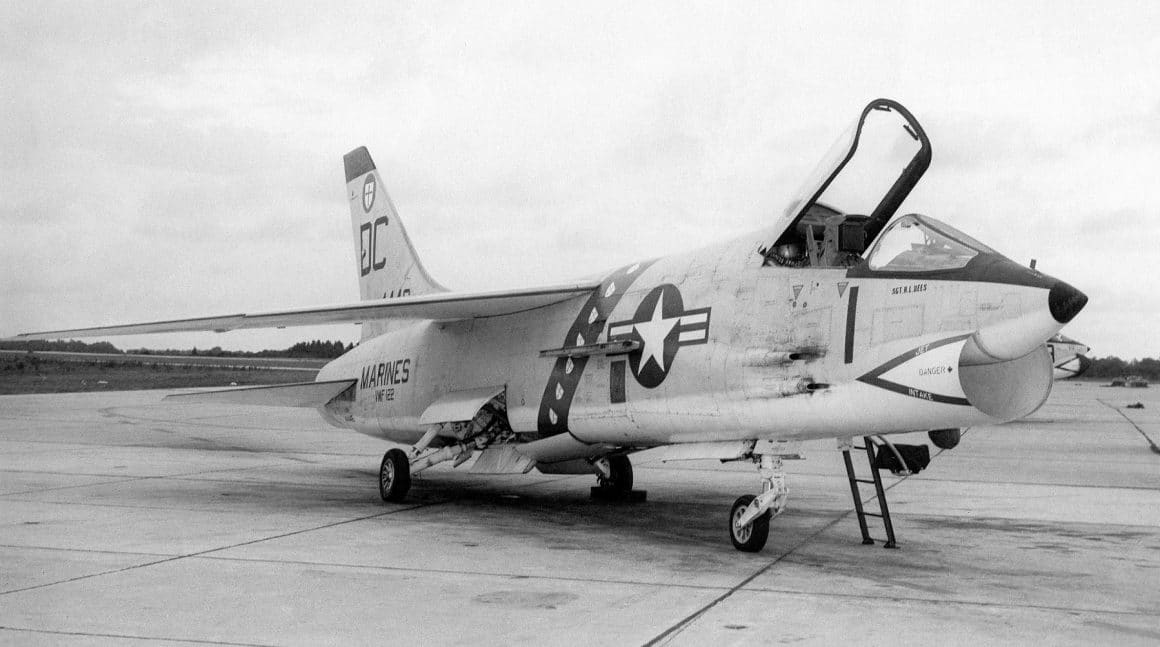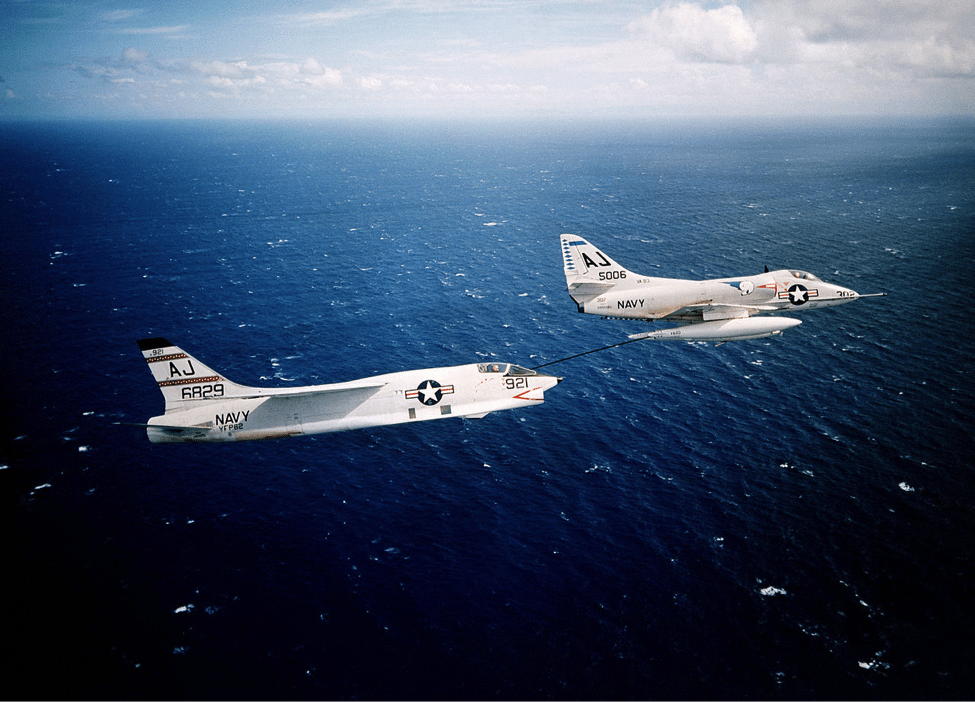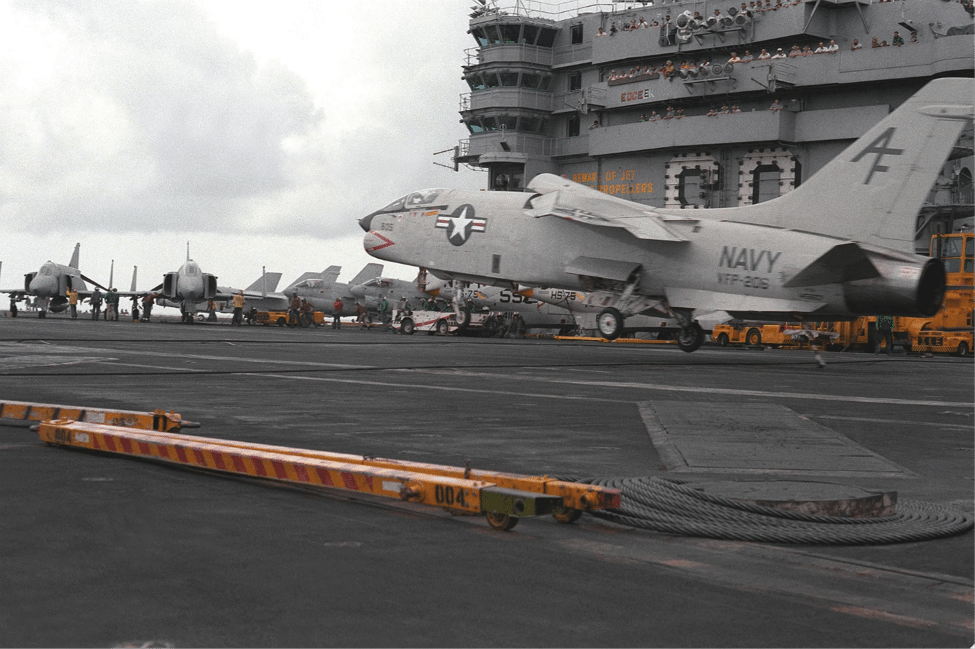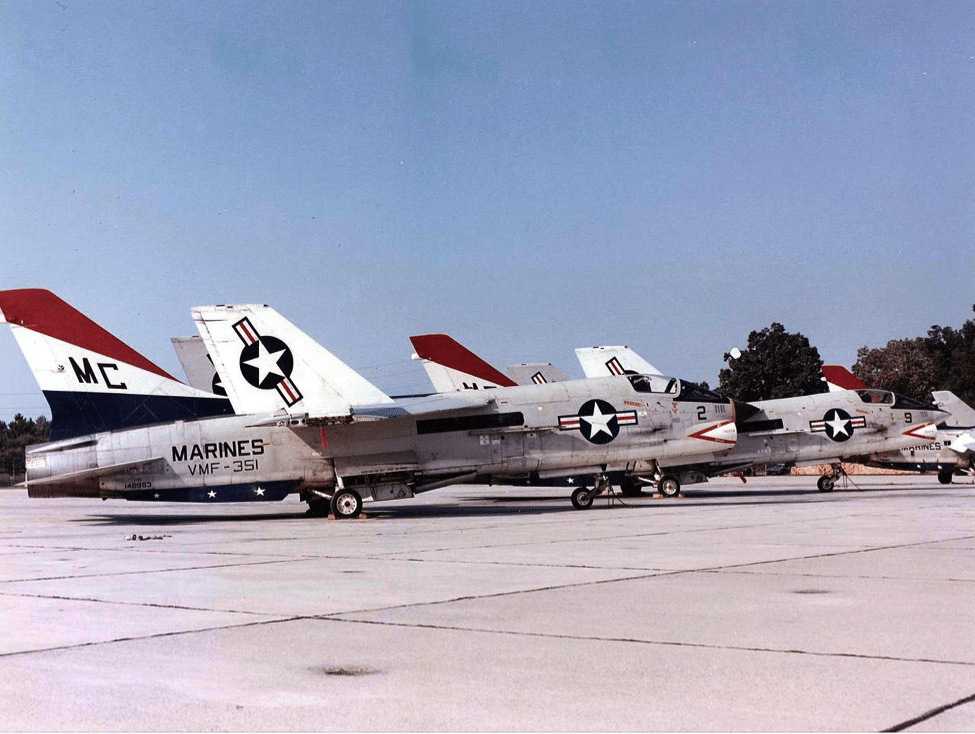Gunfighters Join the Fleet
The first Atlantic Fleet squadron to fly the Crusader was VF-32 Swordsmen based at Naval Air Station (NAS) Cecil Field in Florida during 1957. The Swordsmen deployed as part of Carrier Air Wing 3 (CVW-3) to the Mediterranean later that year aboard USS Saratoga (CVA-60). The first to squadron to receive Crusaders in the Pacific Fleet was VF-154 Black Knights based at NAS Moffett Field in California.

First to Join the Corps
The first Marine Corps squadron to operate the F8U-1 was VMF-122 Crusaders based at Marine Corps Air Station (MCAS) Beaufort in South Carolina beginning in December of 1957. VMF-122 would become the first Marine Corps F8U squadron to deploy aboard a carrier in September of 1959 aboard USS Independence (CVA-62). When the Defense Department standardized military aircraft designations in 1962, the F8U Crusader became the F-8 Crusader. F-8A was the new designator for the previous F8U-1.

Phast Photos
Squadrons flying the RF-8A photo-reconnaissance variant of the Crusader (previously the F8U-1P), such as VFP-62 and VFP-63 Eyes of the Fleet and VMCJ-2 Playboys, formed detachments consisting of a few of their aircraft and required personnel and pilots to be deployed with each carrier air wing during the early 1960s. The first true operational Crusader flights were for Operation Blue Moon– the extremely hazardous low-level photo reconnaissance missions over Cuba during the Cuban Missile Crisis. Mission profiles dictated departure from NAS Key West in Florida, low-level photo runs over Cuba, and recovery at NAS Cecil Field in Jacksonville. Upon recovery at Jax, the film shot by the photo birds was developed and couriered direct to the Pentagon. The pictures confirmed that the Soviet Union was setting up intermediate range ballistic missiles (IRBMs) in Cuba, and later overflights monitored and confirmed the withdrawal of the missiles.

Not Perfect But Still Memorable
The list of Crusader shortcomings is not small or insignificant. Early F-8 variants were famous for springing hydraulic fluid leaks or experiencing electrical system breakdowns at the most inopportune times. The jets required every ounce of the pilot’s attention and skill when coming aboard the carriers. Yaw instability was an issue. The freely castering nose wheel was not conducive to ease of handling on a carrier deck. In order for Crusaders to come aboard safely the carriers had to work up to full speed to offset the fighter’s high approach and landing speed. The jet engine intake (located under the nose) and exhaust were both close to the deck and working around them required constant vigilance from flight deck personnel- earning F-8s the nickname of “Gator.” Of the 1,261 Crusaders built by Vought, it has been estimated that by the time they were finally retired 1,106 of them had been involved in some kind of mishap. In spite of it all, every Crusader pilot I have ever heard of loved the airplane.

Combat: The Gunfighter Engages
Crusaders found themselves in the thick of it when F-8s from VF-211 Fighting Checkmates and VF-24 Fighting Renegades operating with CVW-21 aboard USS Hancock (CVA-19), first took on North Vietnamese MiG-17s on 3 April 1965. The Navy, having developed the F-4 Phantom II at roughly the same time as the Crusader, saw the roles of the two aircraft as similar but divergent. F-8s were built for “dogfighting”; Phantoms for interception and engagement with missiles from long range. The air war in Vietnam proved that dogfights were not a thing of the past as the Navy brass had thought- and the Crusader was the best Navy jet for that kind of fight.

Fighters Moving Mud
In time both the Navy and Marines used the F-8 as a bomber in Vietnam. Able to tote bombs only on its wing-mounted pylons, the Crusader was never the “bomb truck” that the Phantom was. The F-4 was equipped with more hard points for pylons and was able to carry more weight than the Crusader. The F-8, with its high-mounted wings, also taxed ordnance-handling “red shirts” when loading ordnance onto the pylons mounted so high off the deck.


[…] consisted of VF-14 Tophatters flying the McDonnell F3H Demon, VF-11 Red Rippers flying the Vought F-8E Crusader, VA-172 Blue Bolts and VA-12 Flying Ubangis both both equipped with the Douglas A-4C Skyhawk, […]
[…] Vought produced this retrospective film about their F8U-1 and F8U-2 Crusader fighter the days of the Last Gunfighter serving in frontline fleet squadrons were numbered. Their other […]